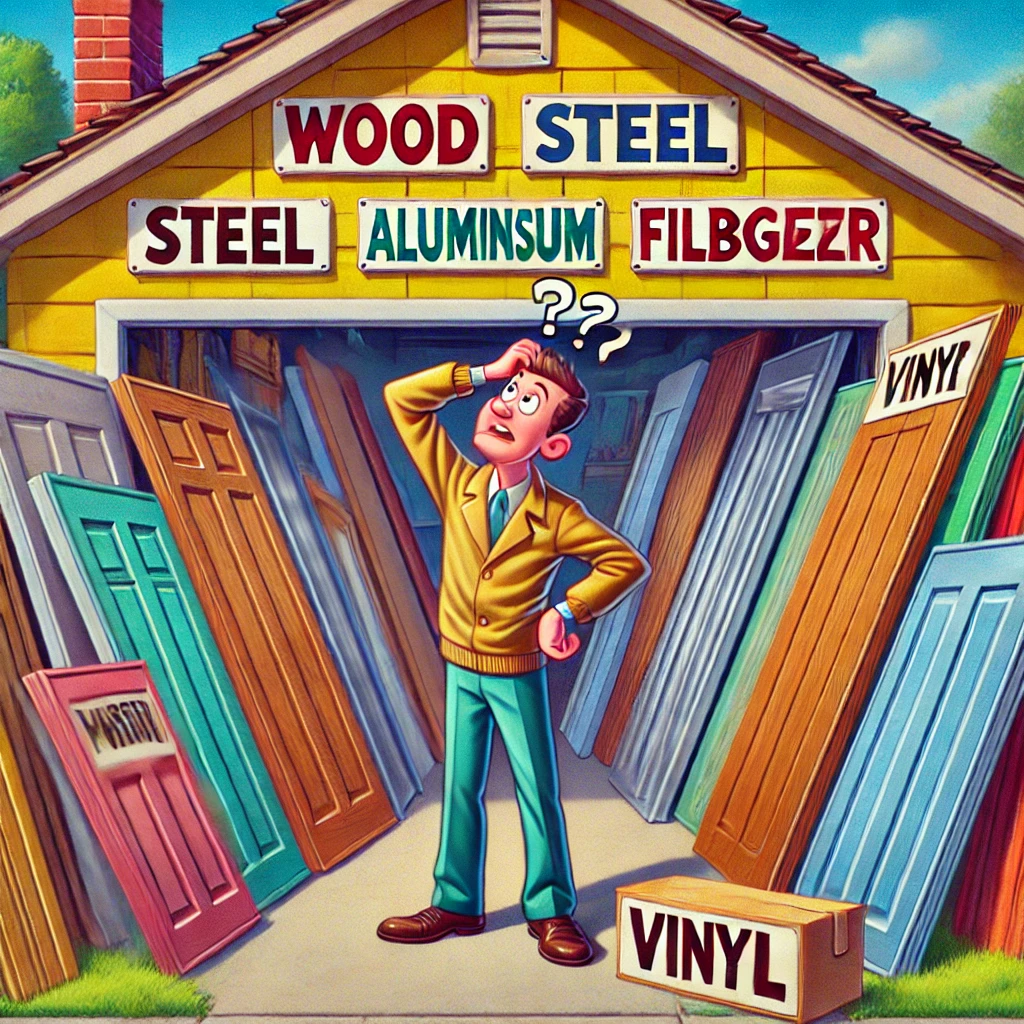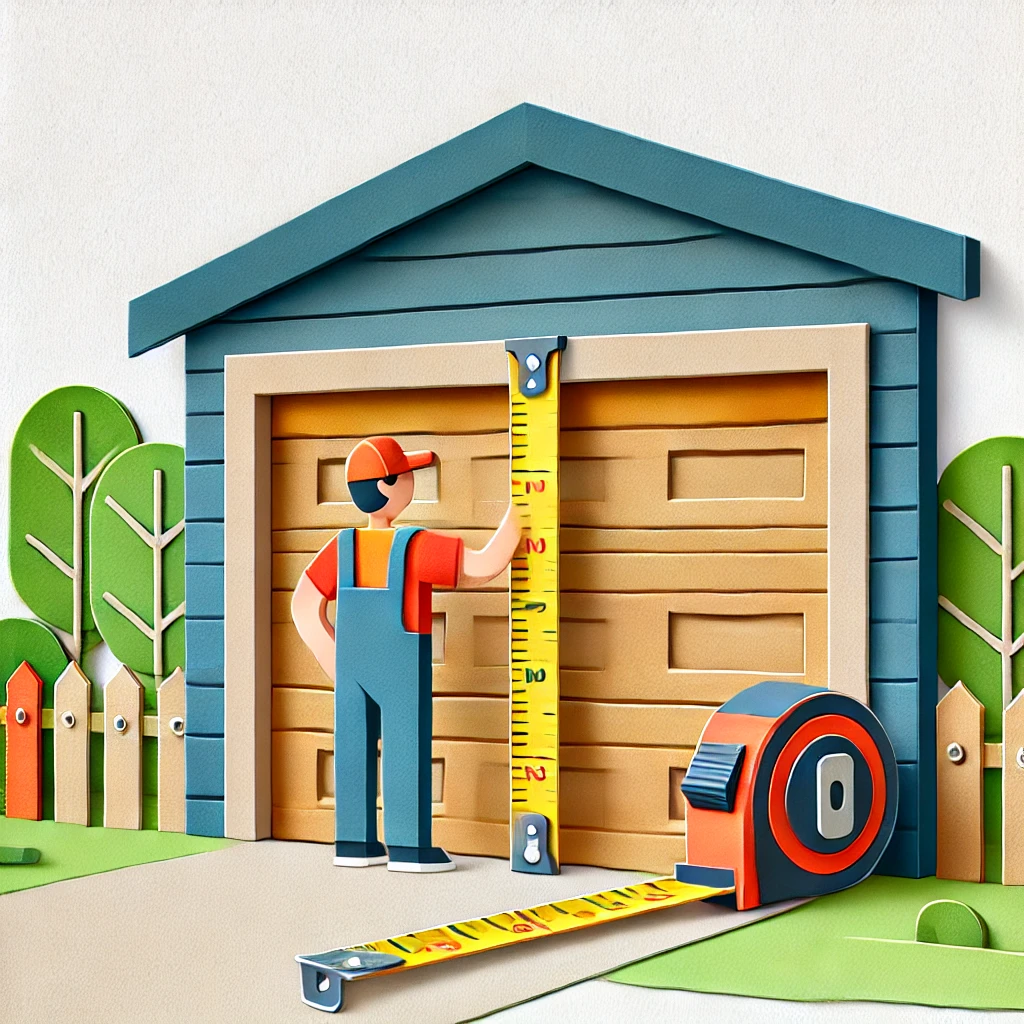Where to Buy Garage Door Replacement Panels Online
The internet has made it incredibly convenient to purchase garage door replacement panels from the comfort of your home. Here are some reliable online platforms where you can find quality panels.
Top Online Retailers for Garage Door Panels
- Amazon
- Pros: Wide variety of options, competitive pricing, and customer reviews to guide your decision.
- Cons: Shipping times can vary, and sometimes the selection may not match specific brands.
- Home Depot
- Pros: Offers both online and in-store shopping, a vast selection of panels, and trusted brand names.
- Cons: Prices might be slightly higher than some online-only retailers.
- Lowe’s
- Pros: Known for quality and variety, Lowe’s provides a good selection of garage door panels.
- Cons: Availability may depend on your location.
- Wayfair
- Pros: Offers stylish and customizable options, especially for those seeking a more aesthetic upgrade.
- Cons: May have fewer choices for more utilitarian or basic panels.
- eBay
- Pros: Great for finding unique or discontinued panels, often at a discount.
- Cons: Purchase comes with a risk, as you’re buying from individual sellers.
- Clopay’s Official Website
- Pros: Direct from the manufacturer, ensuring you get the right fit for Clopay doors.
- Cons: Limited to Clopay products.
Things to Consider When Buying Online
- Compatibility: Ensure the panel is compatible with your existing garage door model.
- Material: Consider the material of the panel, whether it’s wood, steel, aluminum, or fiberglass, to match your existing door.
- Return Policy: Check the return policy in case the panel doesn’t fit or meet your expectations.

Replacing garage door panels might seem like a daunting task. However, with the right information, it can be straightforward and rewarding. Whether you’re dealing with damage from a runaway basketball or wear and tear over the years, replacing panels is a necessary part of maintaining your garage door’s functionality and appearance.
In this guide, we’ll explore everything you need to know about replacing garage door panels, where to buy them, and how to ensure you’re getting the best bang for your buck.
Introduction to Garage Door Panels
Garage doors are more than just a functional part of your home; they’re a significant aspect of its curb appeal. When panels are damaged, it doesn’t just affect how your home looks. It can also impact the garage door’s operation and security. Let’s take a look at what garage door panels do and why they matter.
What Are Garage Door Panels?
Garage door panels are the sections or segments of a garage door that collectively form its structure. They come in various materials, styles, and colors, each contributing to the door’s overall aesthetics and performance.
Why Do Garage Door Panels Need Replacement?
- Damage: Accidents happen. Whether it’s a basketball gone astray or a car bumper misjudged, panels can sustain damage.
- Wear and Tear: Over time, panels can warp, fade, or break, especially in areas with harsh weather.
- Aesthetic Updates: Sometimes, you just want a new look. Changing panels is a great way to refresh your garage door’s appearance.
How to Replace Garage Door Panels
Before diving into where to buy replacement panels, it’s crucial to understand the process of replacing them. This knowledge will empower you to make informed purchasing decisions.
Steps to Replace Garage Door Panels
- Identify the Problem Panel(s): Before buying anything, determine which panels need replacement. This involves inspecting the entire door for cracks, dents, or warping.
- Measure the Panel: Accurate measurements ensure that the replacement panel will fit perfectly. Measure the height, width, and thickness of the panel.
- Purchase the Replacement Panel: Once you have your measurements, you can start shopping for a new panel that matches your door’s specifications.
- Remove the Damaged Panel: Carefully disconnect the garage door opener and support the door before removing the panel. This step may require some help, as garage doors can be heavy.
- Install the New Panel: Align the new panel with the existing ones and secure it in place. Ensure all the hardware is tightened, and the panel fits seamlessly with the others.
- Test the Door: Reconnect the garage door opener and test the door to ensure everything operates smoothly.
Tools You’ll Need
- Screwdriver set
- Hammer
- Pliers
- Tape measure
- Safety goggles
Tip: Always prioritize safety. If you’re unsure about any part of the replacement process, consult a professional.
Material Matters: Choosing the Right Panels

Garage door panels come in various materials, each offering unique benefits and drawbacks. Choosing the right material is crucial for ensuring longevity and performance.
Types of Materials
- Wood
- Pros: Offers a classic, timeless look and can be customized easily.
- Cons: Requires regular maintenance to prevent rot and warping.
- Steel
- Pros: Durable and offers excellent security.
- Cons: Can rust if not properly maintained, and may dent easily.
- Aluminum
- Pros: Lightweight and resistant to rust.
- Cons: Not as durable as steel and may dent more easily.
- Fiberglass
- Pros: Resistant to weathering and offers a modern look.
- Cons: Can become brittle in cold weather and may fade over time.
- Vinyl
- Pros: Durable and low-maintenance.
- Cons: Limited color options and styles compared to other materials.
Garage Door Panel Replacement Cost Considerations
Understanding the cost of garage door panels is essential for budgeting and making informed purchasing decisions. Let’s break down the factors that influence pricing.
Factors Affecting Cost
- Material: As mentioned, different materials have varying costs. Wood is typically more expensive, while steel and vinyl offer more budget-friendly options.
- Size: Larger panels will generally cost more. Measure your door accurately to avoid unnecessary expenses.
- Design and Style: Custom designs or decorative panels may come at a premium price.
- Brand: Established brands like Clopay might charge more due to their reputation for quality.
Average Costs of Garage Door Panels
- Wood Panels: $250 – $400 per panel
- Steel Panels: $150 – $300 per panel
- Aluminum Panels: $100 – $200 per panel
- Fiberglass Panels: $200 – $350 per panel
- Vinyl Panels: $150 – $250 per panel
Tip: Look for discounts and promotions online, especially during holiday sales or off-season times.

Pros and Cons of DIY Replacement vs. Professional Help
Deciding whether to replace garage door panels yourself or hire a professional can impact both cost and outcome. Let’s explore the benefits and drawbacks of each approach.
DIY Replacement
Pros:
- Cost-Effective: Save money on labor costs.
- Flexibility: Work on your schedule.
- Learning Experience: Gain valuable DIY skills.
Cons:
- Risk of Mistakes: Incorrect installation can lead to further damage.
- Time-Consuming: It may take longer if you’re inexperienced.
- Safety Concerns: Garage doors are heavy and can be dangerous to work with.
Professional Replacement
Pros:
- Expertise: Professionals ensure the job is done correctly and efficiently.
- Safety: They have the tools and knowledge to handle potential hazards.
- Warranty: Many professionals offer warranties on their work.
Cons:
- Higher Cost: Paying for labor adds to the overall expense.
- Scheduling: You’ll need to coordinate with the service provider.
Tip: If you’re not confident in your skills, it’s wise to consult a professional for garage door panel replacement.
Maintenance Tips for Longevity
Once you’ve replaced your garage door panels, keeping them in good condition is essential. Proper maintenance ensures they last longer and function smoothly.
Regular Maintenance Tips
- Clean Regularly: Use mild soap and water to clean panels and remove dirt and debris.
- Inspect for Damage: Regularly check for cracks, dents, or other signs of wear.
- Lubricate Moving Parts: Apply lubricant to hinges, rollers, and tracks to prevent squeaking and friction.
- Paint and Seal: For wood panels, repaint and seal every few years to protect against moisture and UV damage.
- Check Weatherstripping: Ensure the weatherstripping is intact and replace it if necessary to keep out drafts and moisture.
Environmental Considerations
In today’s eco-conscious world, considering the environmental impact of your garage door panel choices is essential.
Eco-Friendly Options
- Recycled Materials: Some manufacturers offer panels made from recycled materials, reducing waste and energy consumption.
- Insulated Panels: Insulated panels improve energy efficiency, keeping your garage temperature stable.
- Sustainable Wood: Choose panels made from sustainably sourced wood to minimize environmental impact.
Tip: Look for certifications or labels indicating environmentally friendly manufacturing processes.

Q&A: Common Questions About Garage Door Replacement Panels
1. Where to Buy Garage Door Replacement Panels Online?
Finding the right replacement panels online can be as simple as a few clicks, but knowing where to look is crucial. Websites like Amazon, Home Depot, and Lowe’s offer a broad selection of garage door panels. Each of these platforms provides customer reviews, specifications, and competitive pricing, helping you make an informed decision.
If you’re looking for specific brands like Clopay, checking the manufacturer’s website directly can be a good choice. They often have detailed information and options tailored to their products, ensuring compatibility and quality.
Additional Online Retailers:
- Overstock: Offers unique and often discounted panels.
- Menards: Known for a range of affordable options and regional availability.
- Wayfair: Great for those looking for stylish and custom designs.
2. How to Replace Garage Door Panels?
Replacing garage door panels is a process that requires careful attention to detail. Here’s a step-by-step guide:
- Safety First: Disconnect the garage door opener and unplug the motor to avoid accidental operation.
- Support the Door: Use clamps or have a friend help hold the door in place while you work.
- Remove the Damaged Panel: Unbolt the panel and carefully slide it out, taking care not to damage other parts.
- Install the New Panel: Align the new panel with the rest of the door, ensuring all holes and fasteners line up.
- Secure the Panel: Bolt the new panel in place and double-check all connections.
- Test the Door: Reconnect the opener and test the door’s operation to make sure everything is smooth and aligned.
Tools You Might Need:
- Socket wrench
- Screwdriver
- Adjustable wrench
- Ladder
- Safety goggles
Tip: If you encounter any issues during installation, don’t hesitate to consult online tutorials or seek professional assistance.
3. How Much Are Garage Door Panels?
The cost of garage door panels can vary widely depending on the material, design, and brand. Here’s a general breakdown of the price range for different types of panels:
- Wood Panels: $250 – $400 per panel
- Steel Panels: $150 – $300 per panel
- Aluminum Panels: $100 – $200 per panel
- Fiberglass Panels: $200 – $350 per panel
- Vinyl Panels: $150 – $250 per panel
Factors Influencing Cost:
- Material: Higher-end materials like wood tend to be more expensive.
- Brand: Reputable brands often come with a premium price.
- Size: Larger panels will naturally cost more.
- Custom Features: Decorative elements or custom designs add to the cost.
Tip: Always compare prices from multiple sources to ensure you get the best deal.
4. Where to Buy Clopay Garage Door Replacement Panels?
Clopay is a well-known brand in the garage door industry, offering high-quality and durable panels. To buy Clopay replacement panels, consider the following options:
- Clopay’s Official Website: Purchase directly from the manufacturer for guaranteed compatibility.
- Home Depot: They carry a wide range of Clopay products, often with online ordering and in-store pickup.
- Amazon: Offers a selection of Clopay panels, along with customer reviews to guide your purchase.
Tip: Always check for specific product numbers to ensure the panel you purchase is the right fit for your garage door.
5. Can I Replace Just One Panel on My Garage Door?
Yes, you can replace just one panel if it’s damaged, provided the rest of the door is in good condition. Replacing a single panel is cost-effective and relatively simple. However, make sure the new panel matches the rest of the door in terms of color, design, and material.
Steps for Replacing a Single Panel:
- Identify the Panel: Determine which panel needs replacement and take measurements.
- Purchase a Matching Panel: Find a panel that matches your existing door.
- Replace the Panel: Follow the steps outlined earlier to remove the damaged panel and install the new one.
Tip: If your garage door is older, finding an exact match might be challenging. In such cases, consider repainting the entire door for a uniform look.
6. What Are the Benefits of Insulated Garage Door Panels?
Insulated garage door panels offer several advantages, making them a popular choice for homeowners:
- Energy Efficiency: Insulated panels help regulate temperature, reducing heating and cooling costs.
- Noise Reduction: They provide a quieter operation by dampening vibrations and sound.
- Durability: Insulated panels are often more robust, providing better protection against dents and impacts.
Types of Insulation:
- Polystyrene: Provides moderate insulation and is more affordable.
- Polyurethane: Offers superior insulation and is more rigid and durable.
Tip: Consider your climate and garage usage when deciding on insulation. For example, insulated panels are ideal for garages that double as workshops or living spaces.
7. How Long Do Garage Door Panels Last?
The lifespan of garage door panels depends on various factors, including material, maintenance, and environmental conditions. Here’s an overview of what you can expect:
- Wood Panels: 15-30 years with proper maintenance.
- Steel Panels: 20-30 years, especially if they’re well-maintained and protected from rust.
- Aluminum Panels: 20-30 years, given their resistance to rust.
- Fiberglass Panels: 15-25 years, though they may become brittle over time.
- Vinyl Panels: 20-30 years, thanks to their durability and resistance to weathering.
Tip: Regular maintenance, such as cleaning and lubricating moving parts, can significantly extend the life of your garage door panels.
8. Are There Custom Options for Garage Door Panels?
Absolutely! Many manufacturers offer custom options for garage door panels, allowing you to choose designs, colors, and materials that perfectly match your home’s aesthetic. Custom panels can include unique features such as:
- Window Inserts: Add style and natural light to your garage.
- Decorative Hardware: Enhance the door’s appearance with custom handles and hinges.
- Specialty Finishes: Choose from various finishes to achieve the look you desire.
Tip: Custom options are typically more expensive and may require longer lead times. Consider this when planning your garage door update.
9. What Are the Common Signs That Garage Door Panels Need Replacement?
Recognizing the signs that your garage door panels need replacement can prevent more significant issues down the line. Here are some common indicators:
- Visible Damage: Cracks, dents, or warping are clear signs that panels need attention.
- Operational Issues: If the door struggles to open or close smoothly, damaged panels may be the culprit.
- Increased Noise: Excessive noise during operation can signal that panels are misaligned or damaged.
- Drafts and Leaks: Gaps or cracks in panels can allow air and moisture to enter, indicating a need for replacement.
Tip: Regular inspections can catch these issues early, saving you time and money in the long run.
10. Can I Paint My Garage Door Panels?
Yes, painting your garage door panels is an excellent way to refresh your home’s appearance. Here’s how to do it:
- Clean the Panels: Remove dirt and grime with mild soap and water.
- Sand the Surface: Lightly sand the panels to ensure paint adherence.
- Apply Primer: Use a primer suitable for the panel material.
- Paint: Choose a high-quality exterior paint and apply evenly.
- Seal: For wood panels, apply a sealant to protect against moisture.
Tip: Always use paint designed for outdoor use, as it will withstand the elements better.
11. How Do I Ensure a Good Fit for Replacement Panels?
Ensuring a perfect fit for replacement panels is crucial for seamless operation and aesthetics. Here’s what to do:
- Accurate Measurements: Measure the height, width, and thickness of the existing panels.
- Check Manufacturer Specifications: Use the manufacturer’s specs for a precise match.
- Consult a Professional: If unsure, consult a garage door professional for guidance.
Tip: When in doubt, bring the old panel to the store for a direct comparison.
Replacing garage door panels is a manageable task that can significantly enhance the appearance and functionality of your garage door. By understanding how to replace panels, where to buy them, and what factors to consider, you’re well-equipped to tackle this project confidently.
Whether you’re opting for a DIY approach or hiring a professional, the key is to make informed decisions based on your specific needs and preferences. With the right panels, tools, and knowledge, your garage door can continue to serve as a reliable and attractive part of your home.
Remember, when it comes to maintaining and upgrading your garage door, the possibilities are endless. So, dive in, explore your options, and transform your garage into a space that reflects your style and meets your functional needs.
Happy garage door panel shopping!
